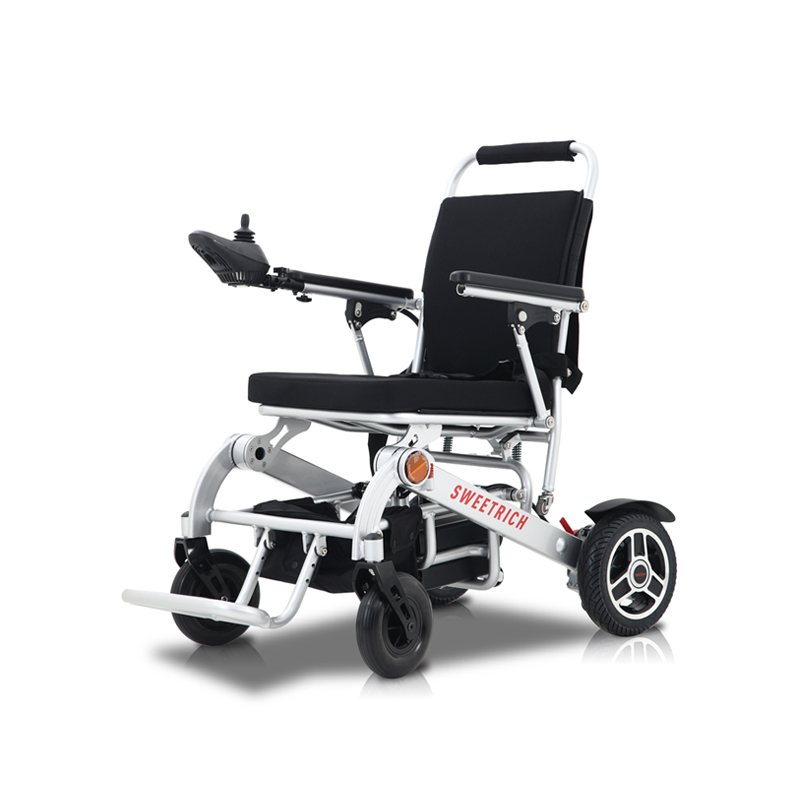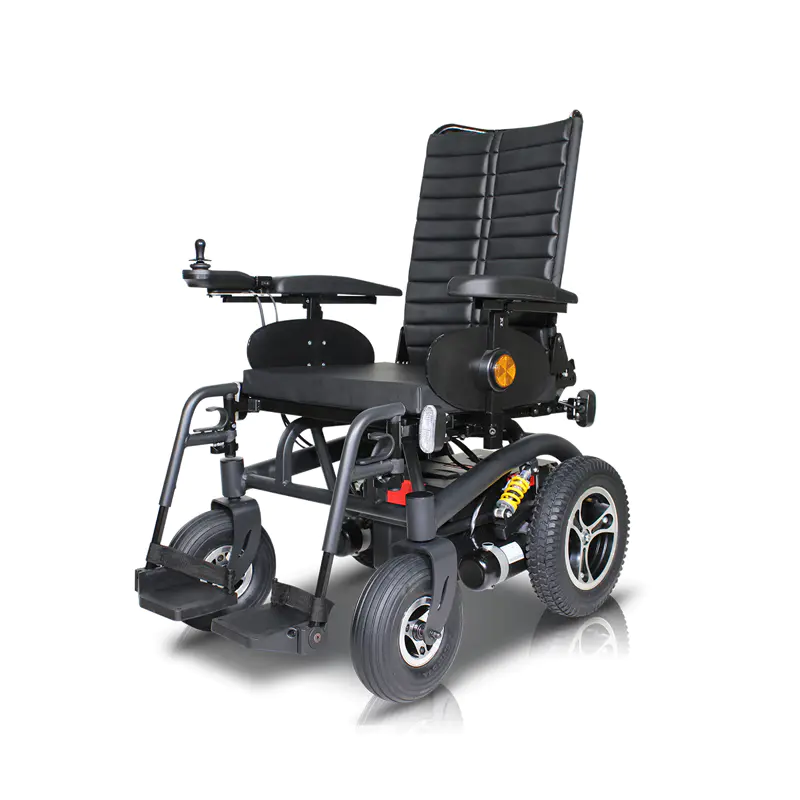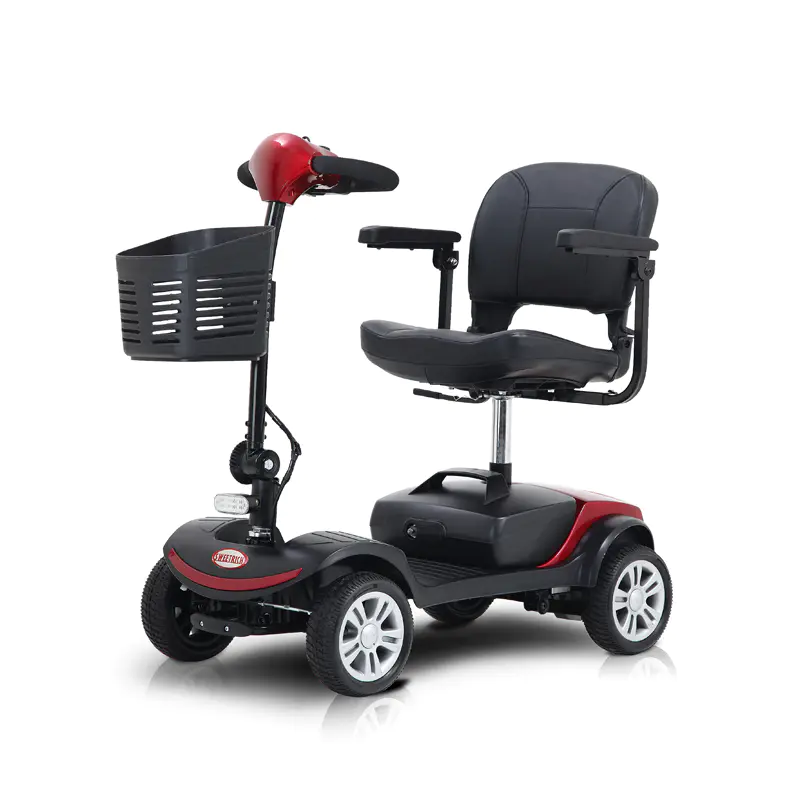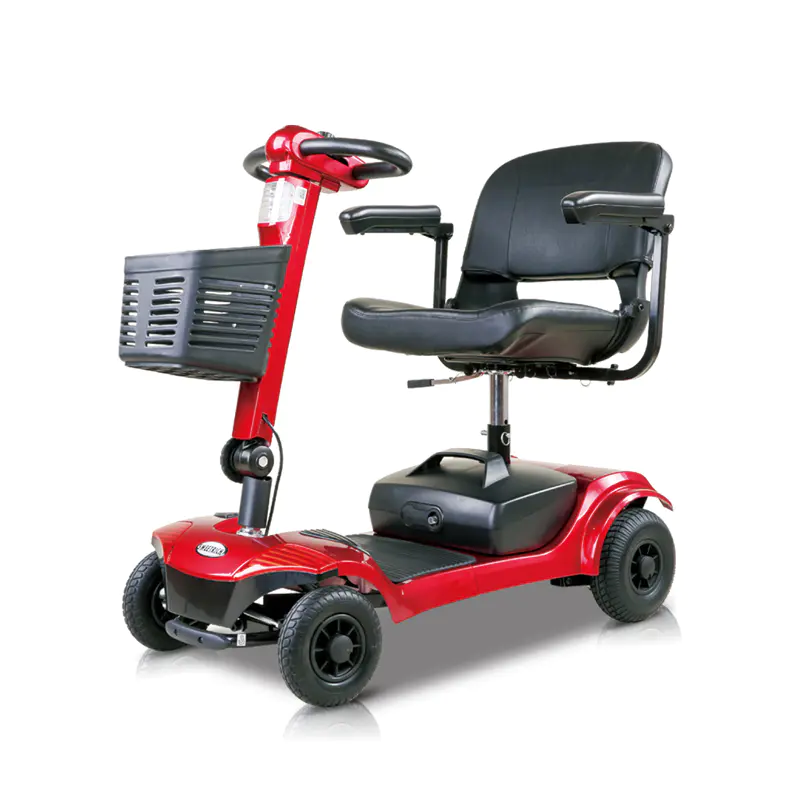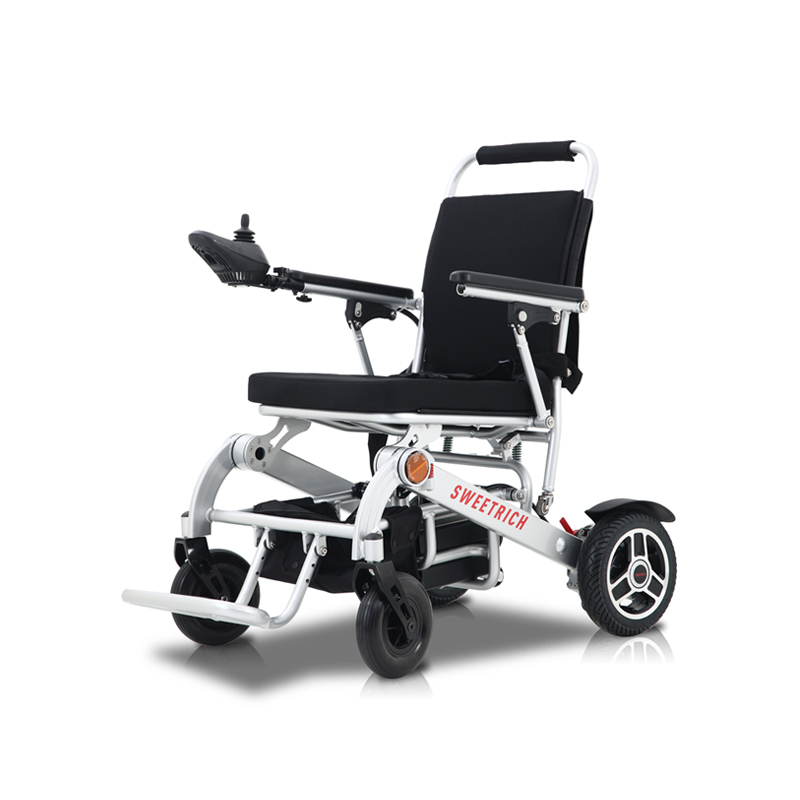Battery technology plays a crucial role in determining the performance, range, reliability, and everyday user experience of electric wheelchairs. Furthermore, with the continuous development of mobile devices, the power systems of electric wheelchairs must support smooth operation, stable power output, and reliable operation in various environments. For a Wholesale Wheelchair Manufacturer, selecting and developing suitable battery technologies is essential to ensuring consistent mobility support for different users.
Why is battery technology so crucial for electric wheelchairs?
Electric wheelchairs rely entirely on batteries for propulsion, steering, braking, and control system operation. The battery must provide sufficient energy to support indoor and outdoor use, handle various terrains, and maintain stable output at different speeds.
A well-designed battery system contributes to:
- Smooth acceleration and continuous movement
- Stable performance throughout the day
- Reliable operation of the motor, control system, and safety features
- Efficient charging process
- Reduced maintenance requirements
- Providing users with comfortable and reliable mobility
What types of batteries can be used in electric wheelchairs?
Electric wheelchair batteries are deep-cycle batteries. Unlike car starter batteries, deep-cycle battery systems need to provide continuous energy output over long periods.
Sealed Lead-Acid (SLA) Batteries
Lead-acid batteries are widely used in mobile devices due to their stable performance and maintenance-free operation. Their sealed design eliminates the need for water and helps prevent leakage during daily use. While heavier than newer batteries, they provide a stable power output sufficient for various mobility needs.
Gel Batteries
Gel batteries use a thickened electrolyte, enhancing shock resistance and minimizing vibration-induced problems. They operate reliably at various temperatures and exhibit strong stability during repeated discharge cycles. Their sealed design ensures stable performance during extended use.
AGM (Adsorbed Glass Fiber) Batteries
AGM batteries contain an internal glass fiber separator to hold the electrolyte, improving conductivity and structural stability. Compared to gel batteries, AGM batteries typically charge faster and have good shock resistance. Its low-maintenance design makes it a reliable choice for users who need to move around frequently both indoors and outdoors.
Lithium-ion batteries
Lithium-ion batteries have a higher energy storage capacity in terms of weight, making them lighter and more compact. This weight reduction benefits users who frequently carry or lift wheelchairs. These batteries maintain a stable voltage output and typically have shorter charging times, supporting more flexible daily schedules.
| Battery Type | Features | Benefits |
|---|---|---|
| SLA | Sealed, deep-cycle, heavier | Stable power, low maintenance |
| Gel | Gel electrolyte, vibration-resistant | Smooth performance, good durability |
| AGM | Glass-mat design, faster charging | Strong shock resistance, easy upkeep |
| Lithium-ion | Lightweight, high energy density | Easy to carry, quick charging |
How Electric Wheelchair Batteries Work?
Electric wheelchair batteries are the core energy source for driving wheelchair movement, control, and overall system functionality. These batteries store electrical energy and supply it to the motor, which then converts it into mechanical power. The control system continuously manages the current, ensuring smooth transitions in speed, direction, and braking. By coordinating motor output with user operation, the wheelchair maintains a balanced and responsive driving experience in various environments.
Deep Cycle Discharge Behavior
Unlike standard batteries designed for short bursts of energy output, deep cycle batteries are designed for stable power delivery over extended periods. This stable discharge characteristic allows electric wheelchairs to maintain performance during prolonged use without sudden drops in output power. Predictable energy flow improves reliability, making the wheelchair suitable for daily mobility, outdoor travel, and long-distance journeys.
Voltage Stability and Performance
Voltage stability is crucial to the overall performance and safety of electric wheelchairs. A stable voltage supply helps to:
- Promote smooth, consistent speed, helping users maintain control on flat surfaces or during long journeys.
- Promote, responsive acceleration, ensuring comfort and safety when starting from a standstill or navigating in confined spaces.
- It possesses reliable capabilities to handle slopes or uneven terrain, enabling wheelchairs to adapt to real-world mobility challenges.
- Onboard functions (such as displays, lighting, and safety indicators) remain continuously operational.
- Predictable and effective braking increases user confidence and reduces the risk of sudden braking.
What factors affect battery performance?
Electric wheelchair battery performance is influenced by both environmental conditions and user habits. These factors determine the efficiency of energy storage and release, ultimately affecting range, responsiveness, and long-term reliability.
Charge-Discharge Cycles
Deep-cycle batteries are designed for repeated charge-discharge cycles, but the depth of each discharge is crucial to the overall battery life. Frequently depleting the battery to extremely low levels accelerates battery degradation, while consistent and timely charging helps maintain more stable long-term performance. Developing a regular charging habit helps ensure the wheelchair always has sufficient charge for daily use.
Temperature Conditions
Temperature has a significant impact on battery performance:
- Higher temperatures cause stored energy to be released more quickly, thus shortening runtime.
- Lower temperatures reduce usable power, slowing the wheelchair's response.
- A moderate and stable temperature environment is ideal, helping the battery provide balanced and reliable output.
- Placing the wheelchair in a suitable environment—especially during charging—helps protect the battery from unnecessary degradation.
Mobility Patterns and Usage Habits
How and where the wheelchair is used also affects battery performance. Driving on slopes, soft surfaces, or uneven roads requires more power than driving on flat indoor floors. Long-distance driving, frequent braking, and repeated acceleration all increase energy consumption. By understanding individual travel patterns, users can better select the appropriate battery type and optimize charging habits, thus ensuring reliable performance in daily life.
How to Maintain Your Battery and the Correct Charging Method?
Proper maintenance helps maintain battery performance and reduce unexpected downtime.
Recommended Charging Habits
- Charge after daily use.
- Avoid completely draining the battery.
- Use only compatible chargers.
- Keep charging contacts clean and dry.
How to Store Your Battery Properly?
- Store in a cool, dry place.
- Disconnect the battery when not in use for extended periods.
- Perform Regular Maintenance Charging
- Avoid direct sunlight or humid environments.
Routine Inspections
Regular inspections help detect problems early:
- Inspect cables and connectors.
- Check for signs of wear or looseness.
- Ensure the charger is working properly.
- Monitor the battery indicator light for abnormal readings.
How does battery technology ensure safety?
Built-in Protection
- Many batteries include:
- Overcharge protection
- Temperature monitoring
- Short circuit protection
- Safe chemical storage
User safety guidelines
- Follow recommended charging methods
- Keep the device away from temperatures
- Avoid altering wiring or connectors
- Replace aging batteries as needed
How will electric wheelchair battery technology evolve in the future?
The future development of electric wheelchair battery technology depends on advancements in materials science, intelligent systems, and energy management technologies. These innovations aim to improve the mobility, reliability, and user comfort of electric wheelchairs, creating more powerful and efficient mobility solutions.
Higher Energy Density
Emerging materials and sophisticated manufacturing processes promise to increase energy density, allowing batteries to store more electricity without adding extra weight. This development can extend the range of electric wheelchairs, supporting longer periods of daily use and improving their overall efficiency. Users will enjoy greater independence and fewer charging cycles.
Fast Charging Solutions
Future charging systems will likely focus on reducing battery charging time. Higher charging efficiency will minimize downtime, making electric wheelchairs more convenient for daily activities, planned trips, and spontaneous outings. Faster charging speeds also provide greater flexibility for users who need a stable power supply throughout the day.
Intelligent Battery Management
Intelligent battery management systems are increasingly becoming an important component of next-generation mobile devices. These systems can monitor battery status, display remaining range in real time, and guide users to develop charging habits. By analyzing usage patterns, this system helps extend battery life and maintain stable performance over the long term.
Safer, More Durable Materials
Advances in battery chemistry and protective structures promise to improve battery safety and durability. New formulations can enhance battery heat resistance, vibration resistance, and resistance to conventional mechanical stress. With more robust internal components and a stronger casing, future batteries are expected to offer greater stability, more consistent power output, and longer lifespan.
| Area | Highlights |
|---|---|
| Energy Density | More power with less weight; longer use time |
| Fast Charging | Shorter charging time; improved daily convenience |
| Smart Management | Real-time monitoring; better charging habits; longer battery life |
| Safety & Durability | Better heat/vibration resistance; more stable and long-lasting performance |
How Battery Technology Impacts User Experience?
A reliable and well-designed battery system supports smooth movement, stable speed control, and consistent performance in various environments. A stable power output prevents sudden deceleration, ensuring predictable response when navigating tight spaces, going uphill, or traveling long distances, thus enhancing comfort. When a battery aligns with a user's lifestyle, it helps enhance independence, confidence, and overall wheelchair satisfaction.
Practical Considerations When Choosing a Battery
- Choosing the right battery requires considering individual mobility needs and daily habits.
- Weight and handling preferences, especially for those who frequently transport or store wheelchairs.
- Typical driving range, ensuring the battery can easily support daily use without unexpected interruptions.
- Indoor and outdoor use, as slippery surfaces and open outdoor roads require different power and durability.
- Terrain conditions, including slopes, uneven surfaces, or soft ground, all affect energy consumption.
- Ease of charging, whether at home, at work, or on the go.
- Expected lifespan and maintenance habits help users choose a system that aligns with their long-term expectations and maintenance routines.
By considering these factors, users can select a reliable battery that enhances the overall functionality of their electric wheelchair.
Sweetrich is conducting research and development to improve battery systems, increase energy efficiency, optimize charging performance, and ensure long-term reliable performance. Their technological advancements can provide wheelchairs with continuous mobility support for a wide range of users.

